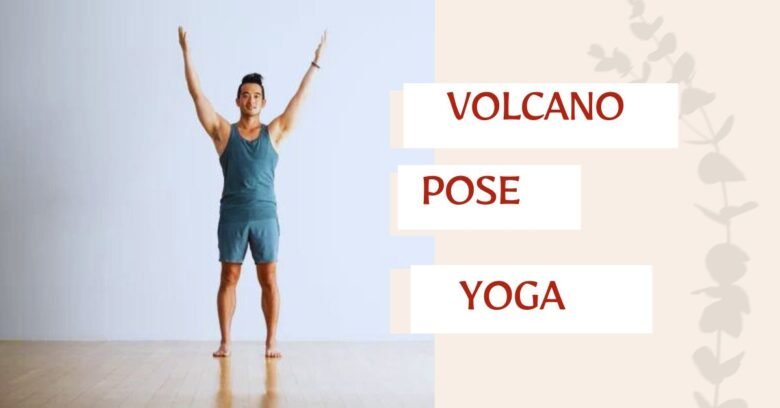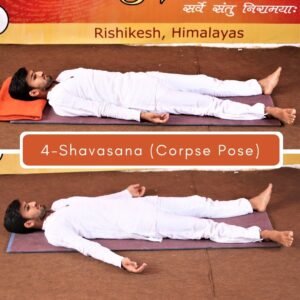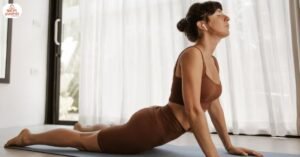Yoga is the ultimate expression to breath and movement as it helps you to connect with your inner soul. Every single pose tells a story. Poses like the volcano pose in yoga help to express emotion, energy, and transformation.
In modern yoga practices, volcano yoga has become a meaningful addition. It is more trending in mindfulness programs, therapeutic movement classes, and kids’ yoga. This yoga is expressive and symbolic. Similar to a volcano, this yoga pose also draws all the energy and lets you gather strength from within. Volcano yoga is a perfect way of expressing power, setting intentions, and cultivating extreme energy.
Volcano yoga is a variation of Tadasana (Mountain Pose) and Urdhva Hastasana (Upward Salute). This yoga lets you experience a moment of transformation where breath and movement unitedly create inner awakening. Hence, volcano yoga is highly beneficial for encouraging confidence and energy. This yoga is good for beginners and children. This post will discuss the technique and benefits of the volcano yoga pose.
What is Volcano Pose?
Volcano yoga is the dynamic variation of Urdhva Hastasana and Tadasana. It is a standing posture where you need to extend the arms over your head, press the palms together with a focus on upward movement. The posture seems like a volcano erupting. This yoga is good for kids and beginners. It perfectly helps you to connect your movement with breath and to symbolize rising energy and transformation.
How to Practice Volcano Pose?
You need to follow a few steps to practise the volcano yoga pose. The steps include;
- You need to stand straight with feet hip-width apart or together and keep your spine elongated and shoulders relaxed.
- Ground evenly through all four corners of your feet.
- Sweep both of your arms up towards the sky.
- Press the palms together, facing inward or keep the arms parallel.
- You can gaze forward or slightly upward.
- Now, draw your navel gently in towards the spine to support your lower back.
- Keep your shoulders away from your ears.
- High energy will rise through your body and out of your fingertips like the powerful surge of a volcano erupting upward.
- Now, exhale and lower your arms down in a sweeping motion. Then, inhale and lift your hands again.
You should repeat steps 3 to 5 times for an energizing breath and better movement flow.
Precautions to Follow While Doing Volcano Yoga
Volcano yoga is usually safe for most people. Still, you must follow some precautions. You must modify the arm movement. Make sure to avoid looking up if you have vertigo. Make sure to practice near a wall or chair to avoid imbalance.
What are the Benefits of the Volcano Pose?
There are multiple benefits of the volcano pose in yoga that include;
- Physical benefits: Volcano yoga helps to improve posture and spinal alignment. This yoga is beneficial for your arms, shoulders, and torso. It also strengthens your legs and core strength. Volcano yoga helps to increase body balance and grounding.
- Breath and energy benefits: Volcano yoga promotes deep breathing and oxygen intake. It helps to regulate the nervous system properly. This yoga pose helps in stimulating circulation and energy flow.
- Mental benefits: The Volcano yoga pose encourages focus and mental clarity. This yoga pose ensures a sense of empowerment. Hence, it is beneficial for emotional expression.
You can practice volcano yoga in the morning to wake up your body. Make sure to warm up your body before practising dense postures.
Wrapping Up
Volcano pose seems easy, but it holds energetic potential and powerful symbolism. This particular yoga posture lets you root deeply into your inner soul, build core strength and strengthen the entire body. Whether you are a beginner, practising solo, or guiding kids, the Volcano yoga pose will be a great addition towards a great lifestyle goal. So, get ready and let your energy erupt-just like a volcano.
Also Read:





Comments
I tried this pose this morning and literally felt a rush of energy moving through my body. It instantly made me feel awake and grounded. Thank you for explaining it so clearly.
Does Volcano yoga pose also help with relieving stress or anxiety? The mental relieving part really caught my attention.